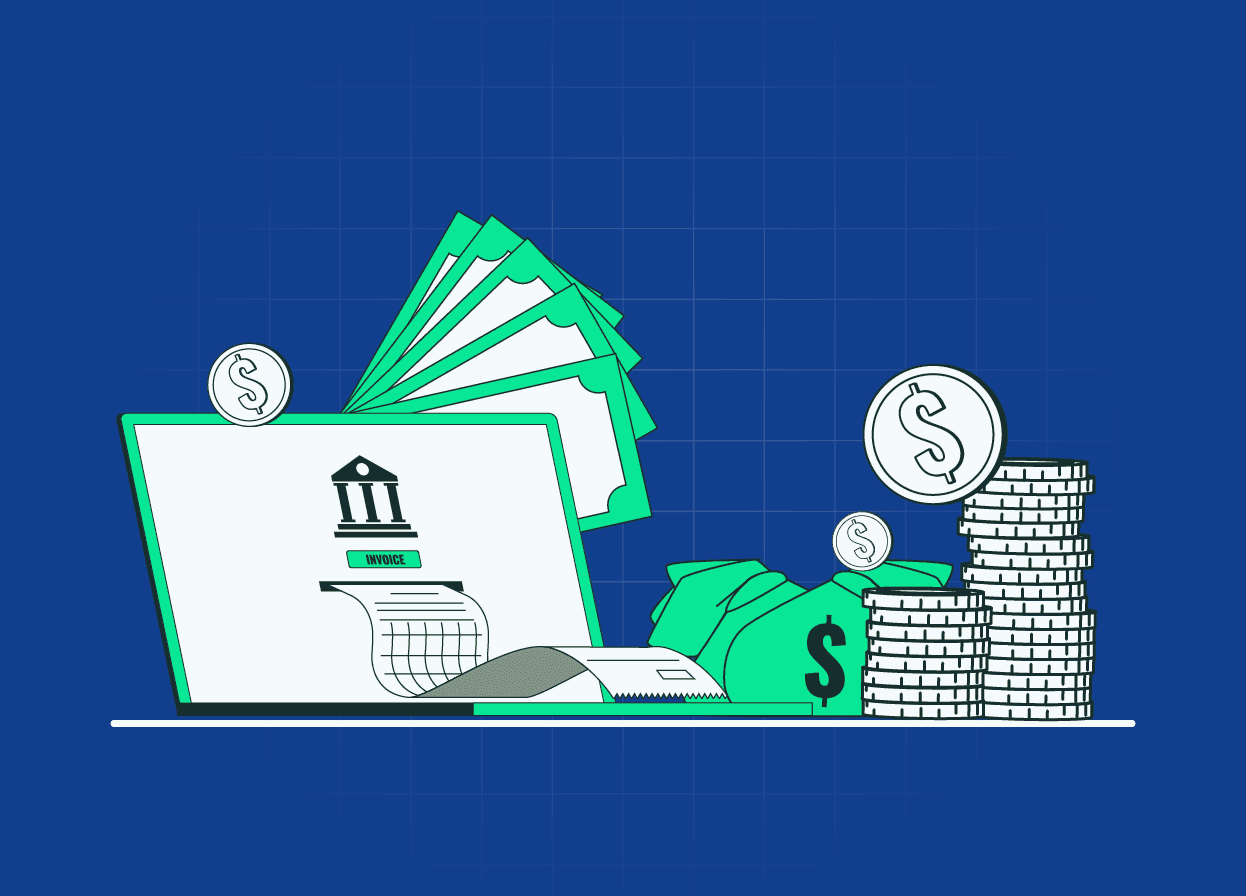How to Receive International Payments in India: A 2025 Guide for Freelancers & Businesses

TL;DR:
- International payments can arrive via bank SWIFT transfers, online gateways (PayPal, Razorpay), money transfer services (Western Union, Wise), or virtual multicurrency accounts (Skydo, Wise, Payoneer).
- SWIFT bank transfers are universal and secure, but often slow (3–7 business days) and expensive (fixed charges + high FX markups)skydo.com.
- Payment gateways like PayPal and Stripe are convenient for online sales but charge ~3–4% fees plus currency conversion spreads.
- Remittance services (Western Union, Wise, etc.) work well for smaller or personal transfers, with quick pickup options but generally poorer exchange rates and no formal receipts (FIRCs) for businesses.
- Virtual multicurrency accounts (e.g. Skydo, Wise Business, Payoneer) let you hold US/UK/EUR accounts. Clients send in their local currency; you get INR. These often have low flat fees and provide instant FIRC/FIRA compliance certificates.
- Always declare the correct RBI purpose code (e.g. P0802 for software export, P1006 for royalties) on each transfer, and obtain the FIRC/FIRA (Foreign Inward Remittance Certificate/Advice) as proof of payment for taxes/GST
- Google Pay UPI is emerging as a cross-border option
International receipts involve extra steps and rules. You must pick a suitable channel, share the right details (account number/Swift code or invoice link), and follow RBI/FEMA regulations (purpose codes, FIRC).
Below, we’ll compare each method and highlight Skydo: an RBI-approved fintech among others- so you can choose the fastest, cheapest, and most compliant option.
Bank Wire Transfer (SWIFT)
Using your Indian bank account’s SWIFT/BIC code is the traditional way. You share your account number and SWIFT code with the sender. The sender’s bank uses the SWIFT network to move funds to your account.
- Timeline: Typically 3–7 business days to credit. Multiple correspondent banks may slow it down.
- Fees: Sender and intermediaries pay fees (often $15–$50 each), which can be passed to you. Indian banks charge extra – e.g. a foreign-exchange markup (say you get ₹82/USD instead of the actual ₹84/USD) and fixed fees for paperwork. Banks often also charge for the FIRC (Foreign Inward Remittance Certificate), e.g. Axis Bank charges ~₹250.
- Ideal For: Large transfers by established businesses who want maximum safety. SWIFT is universal and works for any currency and country.
Pros and Cons
- Pros: Works everywhere; widely accepted and safe, can receive multiple currencies.
- Cons: Slow and costly – banks add hidden forex markups and service charges, and they usually take upto 5 business days to arrive, which can hinder cash flow
Remittance Services (Western Union, Wise P2P, etc.)
These are money-transfer services primarily for personal or casual transfers.
- Western Union / MoneyGram: Foreign sender visits an agent (or online), sends money for cash pickup or bank deposit in India. Transfer time depends on the respective payment and receipt method, but can range between 1-3 business days. Service fees and forex markup can make it expensive; you might lose 5–10% of the value. These services don’t issue FIRAs, so they’re not ideal for business exports. They’re mostly used by individuals (e.g. NRIs sending family support).
- Wise p2p (formerly TransferWise): Wise p2p is a great way for personal transfers. It offers a mid-market exchange rate (plus ~1–2% fee) and quick settlement; however, please note that using p2p services for business payments is not recommended, as it can cause compliance issues.
- Other P2P Services: Remitly, Xoom (PayPal’s service), InstaReM, etc., offer similar benefits. Fees vary but are generally lower than banks for like currencies.
Pros and Cons:
- Pros: Fast and user-friendly for small amounts; often better FX rates (especially Wise). Good for sending money to personal accounts or paying freelancers.
- Cons: Not all support business invoicing. Less official paperwork – most remittance platforms do not issue FIRA. It is recommended to use these platforms for personal transfers only.
Online Payment Gateways (PayPal, Stripe, etc.)
Gateways let clients pay invoices or buy products online. You simply send a PayPal invoice or use Stripe’s checkout links.
- PayPal: Funds hit your PayPal wallet instantly. However, withdrawing to your INR bank takes 1–3 days and incurs fees. PayPal’s India business fees are high – about 4.4% of the amount + $0.30, plus a ~4% currency conversion spread. PayPal issues a monthly FIRA covering all receipts, which helps with GST compliance.
- Stripe: Stripe allows for deep integration and customisation, but currently, it is only invite-only in India. Stripe fees include a 4.3% transaction charge along with a 2% forex markup. Striope doesn't issue FIRA; instead, it issues payment advice, which you need to submit to the bank to get your FIRA.
Pros and Cons:
- Pros: Global acceptance; strong APIs for SaaS/tech businesses; built-in invoicing and subscription management.
- Cons: Fees add up (4–8% effective for foreign clients); INR settlement can take several days; Stripe doesn't offer FIRA, plus it is currently invite-only in India.
Virtual Multicurrency Accounts (Skydo, Payoneer, Wise Business)
This modern method gives you real bank accounts in foreign countries. When a client in the US/EU/UK pays you in local currency, it lands in that virtual account; the fintech then converts and remits INR to you.
- Skydo: An RBI-licensed platform for Indian businesses. You get real US, EU, UK, CAD, and AUD accounts in minutes. Incoming payments use live mid-market FX rates with ZERO markup. Fees are flat and transparent: $19 per transaction up to $2,000, $29 up to $10,000, and 0.3% above $10k. No percentage fee for small transfers means you save on every payment. Skydo also provides instant GST-compliant invoices and immediate electronic FIRA for each receipt.
- Wise Business: Multi-currency accounts with real banking details in USD, EUR, GBP, AUD, etc. Wise uses the mid-market rate (no hidden spread) and charges ~1.6–2% on transfers. It also issues digital FIRA for every payment at USD 2.50/ FIRA.
- Payoneer: Gives you receiving accounts (USD, EUR, GBP, JPY) and a multi-currency balance. Fees include a ~3% forex markup when converting to INR, plus additional fees basis the mode of payment. It also levies an annual account fee for inactivity. The platform issues free digital FIRA. It’s popular with marketplaces (Amazon, Fiverr, Upwork) that integrate Payoneer.
Pros and Cons:
- Pros: Speed & low cost. No SWIFT delays or hidden FX spread. Receipts post in 1–2 days, and you get FIRC/FIRA for compliance. Ideal for frequent cross-border invoices.
- Cons: Varries across platforms, Skydo doesn't support outward remittance, Payoneer levies forex markup and has a complex fee structure. Wise charges for issuing FIRA and can only support 10k/invoice
Comparison of Methods
| Banks | Payment Gateway | Virtual Account | Remittance Platforms | |
| Settlement time | Upto 7 business days | 1- 5 business days | 24-48 hours | 1-3 business days |
| Fees | SWIFT fee+ forex markup+ ancillary fee | Paypal fee: 4.4% fee+fixed fee+ 4% currency conversion feeRazorpay Fee: 3% | No SWIFT fee. Skydo charges $19 (<$2,000), $29 ($2,001–$10,000), 0.3% (>$10,000). | Variable, often includes forex markup |
| Compliance | 100% compliant but have to seperately request and pay for FIRA | FIRA provided | Digital FIRA provided | No FIRA provided |
| Usability | Can be time consuming and Frequently requires followups | Easy to use, User friendly interface | New age platforms providing seamless User experience | Easy to use |
| Suited for | Big businesses with large payment volume | Online businesses, ecommerce, freelancers | small to medium businesses and freelancers | Personal transfers |
Each option suits different needs: banks for large safety, gateways for integration, remittance for convenience, and virtual accounts for cost/efficiency.
RBI Compliance: Purpose Codes & FIRC/FIRA
All foreign receipts must comply with RBI rules under FEMA. Two key requirements are:
- RBI Purpose Code: This is an alphanumeric code (e.g. P0802, P1401, P1301) that declares why the money is coming in (salary, export of software, gift, etc.). RBI mandates that every inbound remittance carry the correct purpose code. Banks capture it for FEMA reporting. Using the right code is critical: it avoids delays or returns and ensures your paperwork (GST filings, audit trail) is clean. For example, a freelancer exporting IT services might use P0802 (Software Services). Always tell your sender the code before they initiate the transfer (most online platforms allow entering it)
- FIRC/FIRA: After the money arrives, the bank issues a Foreign Inward Remittance Advice (FIRA) or FIRC, as it is sometimes still called. This document shows the sender's details, the amount, and the purpose. It’s essential for accounting, GST claims, or export incentives. Traditional banks charge for FIRAs (e.g. Axis Bank ~₹250). Digital services (Skydo, Payoneer) typically issue an electronic FIRA instantly at no extra charge. Keep all FIRCs safe. If the bank asks, submit any requested docs (invoices, contracts, Form 15CA/15CB, etc.) so they can complete the certificate quickly.
Complying with these requirements is as important as choosing the right transfer method,
Why Choose Skydo (Recommended)
Skydo stands out as an India-made solution focused on receiving (inbound) payments:
- RBI-Approved & Secure: Skydo is RBI-licensed and partners with leading banks
- Transparent Fees:. You pay a flat fee (e.g. $19 for payments up to $2k, $29 for $2k–$10k and 0.3% for payments above $10k) and get the live mid-market rate (same as Google’s rate). Many users report huge savings per transaction vs. banks
- Instant Compliance: Skydo provides instant, GST-compliant invoices and FIRA certificates for every transfer. These appear in your dashboard automatically, so you never miss documentation.
- Real Multicurrency Accounts: Create US, EU, UK, Canada, and Australia accounts in minutes. Clients pay like they’re paying a local business.
- Fast Settlements: Funds arrive in your Indian account typically within 24 -48 hours, with real-time tracking
- Support & Tools: Skydo offers personal onboarding, analytics, reminders, and more for growing businesses
In short, Skydo simplifies compliance and slashes costs on each invoice. It’s ideal for freelancers and exporters who want full payment, zero surprises
How can I receive payment from abroad to India?
You can receive payments from abroad in India via Bank or via platforms like PayPal, Skydo, Wise, Payoneer and more
Which banks in India support international transactions?
What are the fees for accepting international payments in India?
Is Money from abroad taxable
How to receive international salary in India?
Can I receive international payments in India without PayPal?
What is the cheapest way to receive money from abroad?
How long do international transfers to India take via different methods?
PayPal vs. Wire Transfer: Which is better for freelancers
how to get paid by international clients from India?












